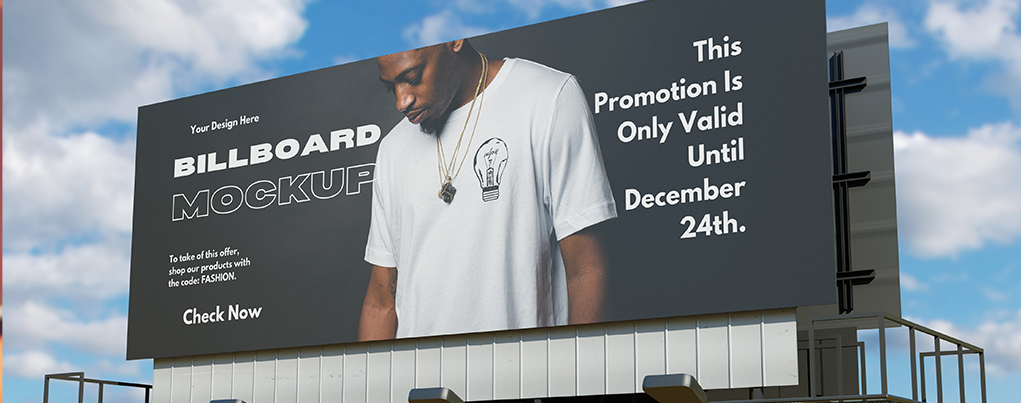
Outdoor advertising encompasses various forms of marketing communication displayed in public spaces, aiming to reach a wide audience. Among the most prominent formats are billboards, transit advertising, and street furniture advertising, each with its unique characteristics and advantages.
1. Billboards:
Billboards are large outdoor advertising structures designed to capture the attention of motorists and pedestrians. They typically feature eye-catching graphics, bold text, and striking visuals to convey a message quickly and effectively. Here's a detailed breakdown of billboards:
Design and Size:
Billboards come in various sizes, ranging from standard 14'x48' structures to larger-than-life digital displays.
The design of a billboard is crucial for attracting attention. High-quality graphics, clear messaging, and bold colors are commonly used to create visually appealing ads.
Due to their size and visibility, billboards offer advertisers ample space to convey their message creatively.
Location:
The success of a billboard campaign often depends on its location. Prime spots include busy highways, urban centers, and areas with high foot traffic.
Strategic placement ensures maximum exposure to the target audience. Advertisers may negotiate with property owners or outdoor advertising companies to secure desirable locations.
Effectiveness:
Billboards are effective for brand awareness and generating high-frequency exposure. Commuters and pedestrians encounter them repeatedly during their daily routines.
They offer continuous visibility, making them ideal for reinforcing brand messaging and promoting products or services.
Challenges:
Despite their effectiveness, billboards face challenges such as ad clutter and limited viewing time. Advertisers must create attention-grabbing content to stand out among competing messages.
Regulatory restrictions, zoning laws, and local ordinances may also impact the placement and design of billboards.
2. Transit Advertising:
Transit advertising involves placing ads on vehicles such as buses, subways, taxis, and trains. It allows advertisers to reach a captive audience during their commute. Here's a detailed overview:
Formats:
Transit ads come in various formats, including exterior bus wraps, interior posters, and digital screens inside vehicles.
Exterior wraps provide maximum exposure to pedestrians and motorists, while interior ads target passengers directly.
Digital screens offer dynamic content and the flexibility to change messages frequently.
Reach and Targeting:
Transit advertising reaches diverse audiences across urban and suburban areas. It is particularly effective in densely populated cities with extensive public transportation networks.
Advertisers can target specific routes, demographics, and geographic areas to reach their desired audience segments.
Visibility and Impact:
Transit ads offer prolonged exposure as passengers spend significant time traveling from one location to another.
They are highly visible in urban environments, where public transportation is a primary mode of travel.
3. Street Furniture Advertising:
Street furniture advertising involves placing ads on objects such as bus shelters, benches, kiosks, and information panels. It integrates marketing messages seamlessly into urban landscapes. Here's a detailed examination:
Types of Street Furniture:
Street furniture ads can be found on bus shelters, transit benches, newsstands, trash bins, and public restroom facilities.
These structures serve functional purposes while also providing advertising space for brands to communicate with consumers.
Visibility and Engagement:
Street furniture ads are strategically placed in high-traffic areas to maximize visibility and engagement.
They cater to pedestrians and commuters, offering opportunities for passive engagement while waiting for transportation or navigating the city.
Integration with Surroundings:
Successful street furniture ads blend seamlessly with their surroundings, enhancing rather than detracting from the urban environment.
Advertisers may incorporate local landmarks, cultural references, or contextual elements to resonate with the target audience.
Impact and Effectiveness:
Street furniture advertising offers a cost-effective way to reach audiences in urban centers and community spaces.
It provides continuous exposure and reinforces brand messaging throughout the consumer's daily routine.
In conclusion, outdoor advertising, including billboards, transit ads, and street furniture ads, offers diverse opportunities for brands to connect with consumers in public spaces. Each format has its advantages, catering to different audience segments and marketing objectives. Effective outdoor campaigns leverage strategic placement, compelling design, and creative messaging to capture attention and drive engagement.
© Smartzone is Proudly Owned by Smartzone Smartzone